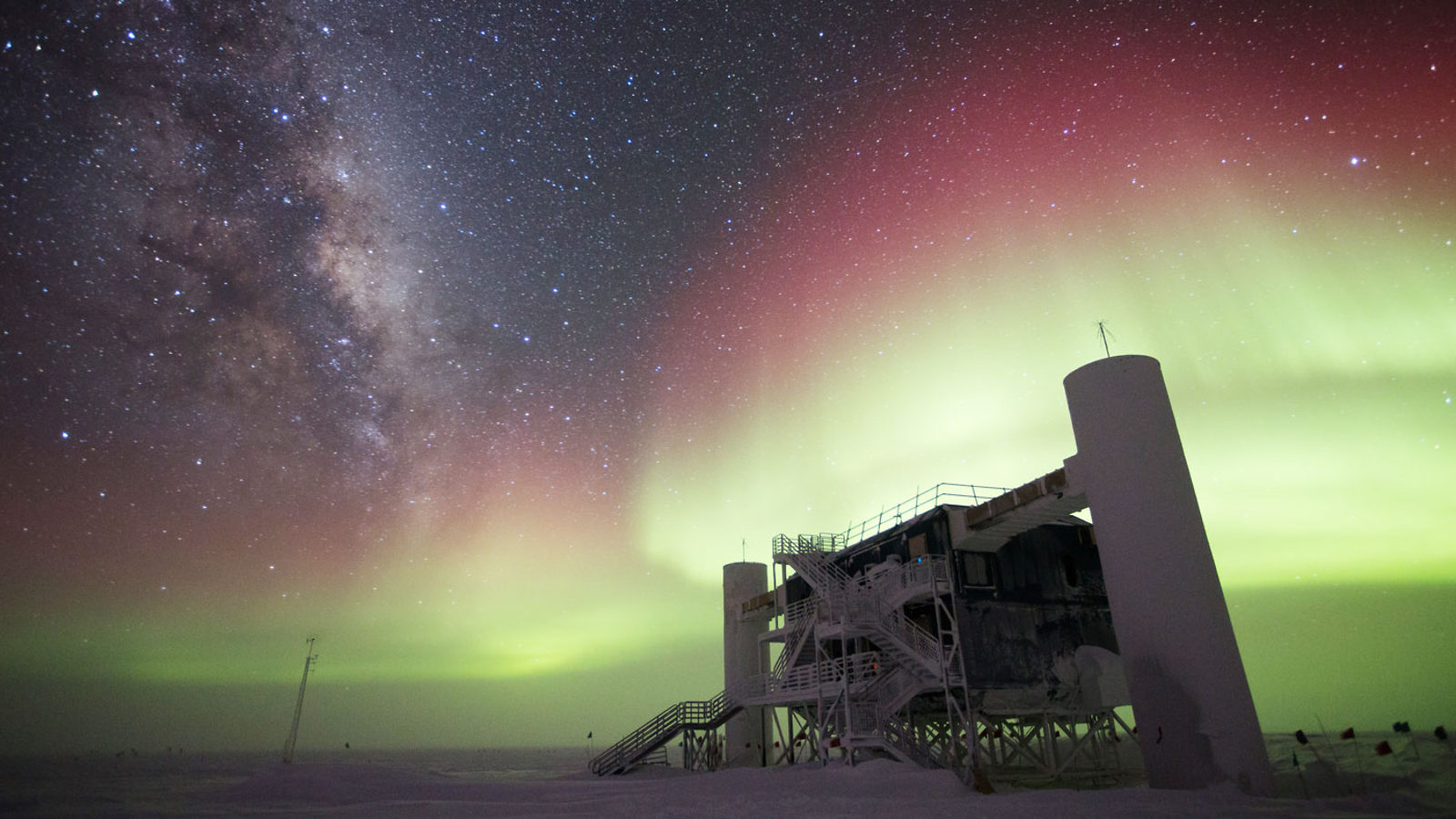In 2013, the IceCube neutrino experiment at the South Pole reported the observation of two ultra-high-energy neutrino events, which they named after Sesame Street characters Bert and Ernie. Later, they found one more.
It seems a fourth character has moved into the neighborhood. Today IceCube scientists reported the observation of an even higher-energy neutrino event, one that offers scientists the best hope yet that they will be able to use ultra-high-energy neutrinos to find the source of ultra-high-energy cosmic rays. The neutrino event had an energy of more than 2000 trillion electronvolts.
“We have been adding to our previous analysis more years of data, and in an extra year we found this spectacular event,” says Francis Halzen, IceCube principle investigator for the University of Wisconsin, Madison.
For more than a century, scientists have known that particles called cosmic rays rain down on the Earth from space. Some of these cosmic rays slam into our atmosphere at energies higher than we could possibly reach in any earthly particle accelerator. It is still a mystery where these particles come from, but it seems that they are from energetic sources outside our galaxy. One suspicion is that they are coming from active galaxies swirling around distant black holes.
Cosmic rays are charged particles, which means that their paths bend and shift as they pass through magnetic fields in space. That makes it difficult to trace their origins.
That’s where neutrinos come in. Neutrinos are neutral, rarely interacting particles that can pass through entire planets without changing course. Ultra-high-energy neutrinos that the IceCube experiment observes could be coming from the same sources as ultra-high-energy cosmic rays. If so, they could point the way back to those sources.
“This opens the neutrino astronomy field,” says Fermilab neutrino scientist Anne Schukraft, a former member of the IceCube collaboration.
Neutrinos come in three types, called flavors: electron, muon and tau. When electron and tau neutrinos interact with the ice around the IceCube neutrino detector, their energy appears to balloon out from their interaction points, making it difficult to figure out exactly where they came from.
This latest ultra-high-energy neutrino, however, was a muon neutrino. When muon neutrinos interact, they release a muon, a heavy cousin of the electron that can travel straight through matter for several kilometers before running out of steam.
In this case, a neutrino passed through the Earth and interacted somewhere outside of the IceCube detector. The muon it released passed through it, drawing a distinct line to show where it came from.
From there, “Standard Model physics can run the movie backwards,” Halzen says.
The muon they detected had an energy of more than 2000 trillion electronvolts; the neutrino that produced it likely had about three times that energy. The only known source of such a high-energy muon coming through the Earth is a muon neutrino.
The detector originally picked up the event on June 11, 2014. The IceCube collaboration conducts a blind analysis of its data, which means that it looks at it in large batches, in this case collected over a couple of years.
When they looked at their data, they sent an alert to scientists working on the HAWC Gamma-Ray Observatory, an array that collects gamma-ray data from a large range of the sky over time. Scientists have already looked through HAWC 2014 data for an associated gamma-ray signal, says gamma-ray scientist Werner Hofmann of the Max Planck Institute for Nuclear Physics in Germany.
From here on out, Halzen says, the IceCube collaboration will send alerts to other experiments that study gamma rays as soon as possible after detecting an ultra-high-energy neutrino event.
“We are now going to announce events in real time,” Halzen says. “We’re going to bring out events like this hopefully in minutes.”
That way even telescopes like the VERITAS telescope or the Fermi Gamma-ray Space Telescope will be able to point in the right direction to try to find a signal. Halzen says he expects these “astronomical telegrams” to come about once per month.
Additional reporting contributed by Ali Sundermier.



